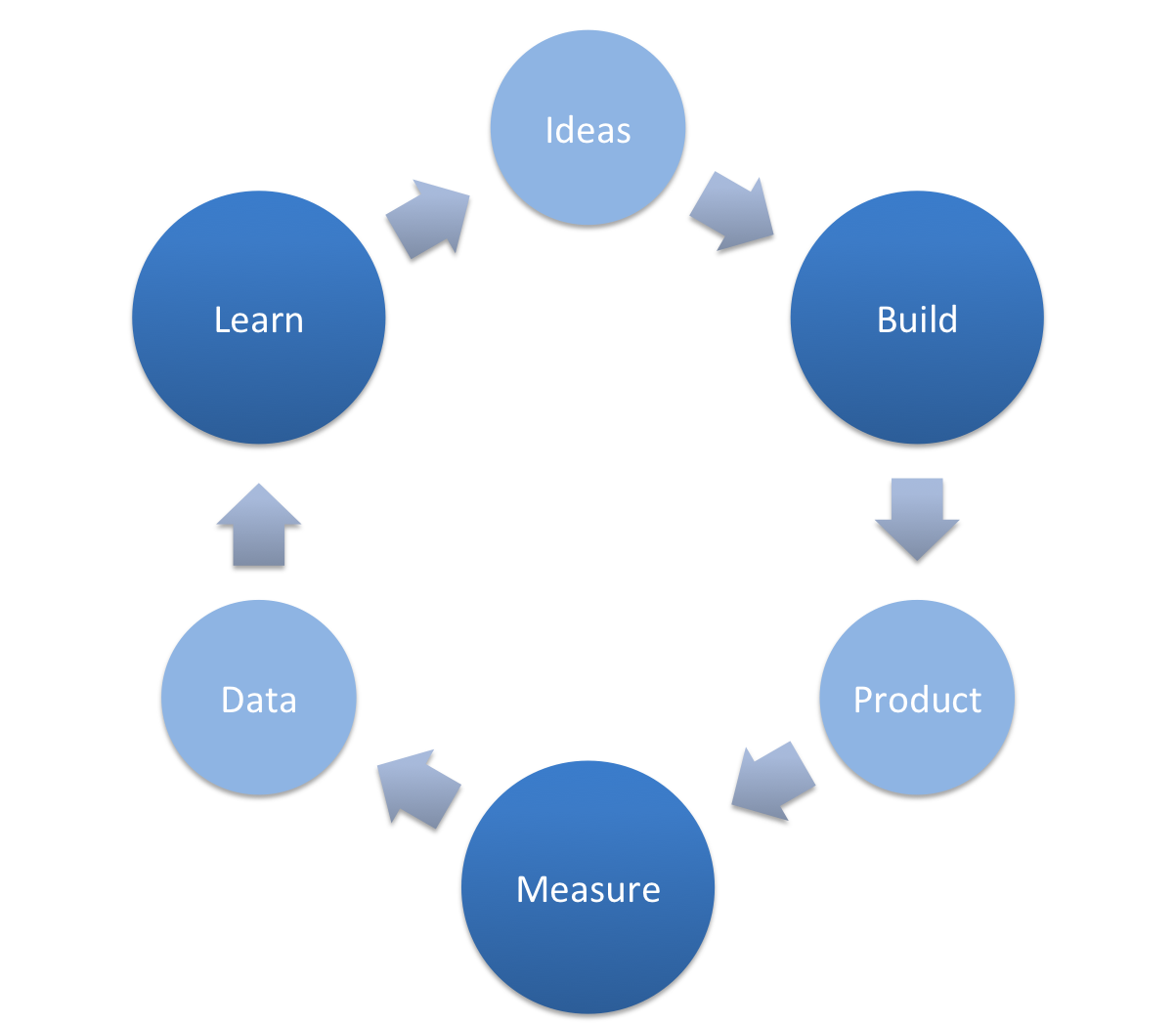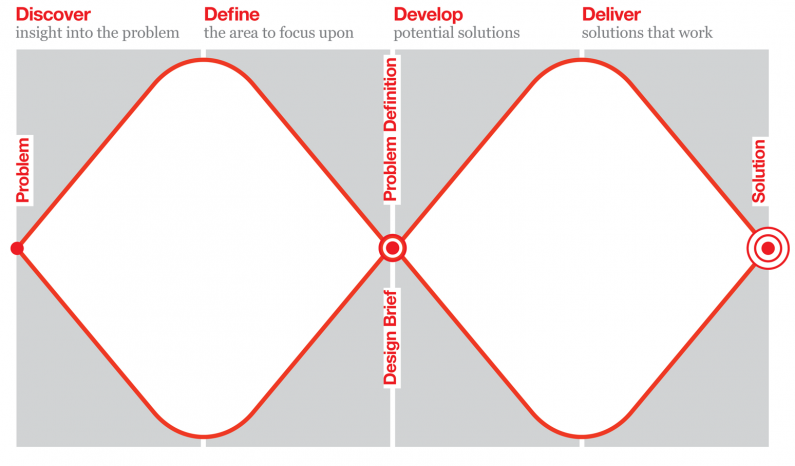Challenge
How can we formalize the innovation process without falling into bureaucratization or losing the ability to devise and develop new digital public services that provide new solutions with a high value for society.
Current issue
In the environment VUCA (acronym in English for volatility, uncertainty, complexity and ambiguity) in which we find ourselves immersed, the administrations are lagging behind when it comes to providing value to citizens. We risk becoming irrelevant in the eyes of the citizens, or at worst an anachronistic leviathan, if we don't take the bull by the horns and step up to lead or at least live up to it of what today's society demands. We have only one path, that of innovation. You can innovate in many areas and in many ways, but we, here, will focus on the territory of the creation of digital public services.
Innovation is a path of exploration, and as such it is often winding. To think that innovation can be strictly and rigorously planned is to believe that innovation is a totally predictable activity, with no margin for error or room for responsible risk.
Nothing to do with practice. Innovation requires space to experiment and therefore thrives in environments where new ideas and the culture of "try, fail, and learn" are valued. But innovation goes beyond being creative, having good ideas or a magical moment of inspiration. It requires hard work to turn ideas into tangible solutions that can be applied, have an impact and, in the case of public innovation, add value to society.
Therefore, we cannot leave the activity of public innovation in the hands of improvisation or chance; in particular, the case here: innovation in digital services. To reduce the risk inherent in any change process, to achieve viable results and to create value, it is necessary to apply a method, follow a path, and orderly steps.
Formalizing the innovation process is good, as long as we do not fall into unchanging formulas that enclose and limit our creative and entrepreneurial potential.
In any case, there is no single way to innovate (neither in the public nor in the private sector), therefore, there is no single method to innovate and no single recipe. The challenge is to find one, sufficiently flexible and open, that can be adopted and enriched by the different administrations and bodies of the local world that are currently immersed in innovation processes of digital public services.
Proposed solution
The original recipe we propose basically consists of the 4 usual steps in which innovation projects are developed. The recipe is based on the Double Diamond model by the Bristish Design Council, widely used when applying seemingly chaotic design-thinking, but also in the methodology Lean Start-up, which applies the scientific method to service development.
Model of the double diamond of the British Design Council
Thus, the greater the degree of uncertainty, risk or lack of definition of WHAT we want, the more we focus on the first methodology, that is to say on exploring the space of the problem and the possible solutions, and as we get clearer the idea or ideas that they solve it better, we move more in the Lean Start-up field, that is, in a more scientific environment where we validate hypotheses through rapid experiments in order not to waste (public) resources. Once the uncertainty is removed, we move on to implementing the solution using agile methodologies that allow us to write code with speed and quality.

Lean Startup Model
If we delve into the process from the beginning, then, we can say that the starting point is usually a problem or need that we want to solve and that it is usually not sufficiently defined or concrete. It consists of the following steps:
Step 1: Discover
- Look at the problem.
- Gather as much relevant information as possible to help us contextualize. For example, conducting studies, reports, surveys, user interviews, and so on. Always with an open attitude, never taking anything for granted and avoiding preconceived ideas.
- Empathize with users who suffer from the problem and understand their needs that are not always obvious.
- The result of this phase is a broad set of relevant but raw information that will facilitate the work of the later phase.
- Methods and techniques: Interviews, user diaries, surveys, benchmarking, etc.
Step 2: Define the challenge
- Understand the user's motivations, frustrations, or unfulfilled desires in context, in order to gain a deeper understanding of the essential and often not explicit problem.
- Identify and define areas of opportunity for innovative services, evaluating the feasibility, impact and risks, to help us prioritize the specific challenge that we want to address.
- The result of this phase is a phrase that defines the challenge and follows the model “How could we improve or reimagine X (goal) to achieve Y (impact)?”This is a statement broad enough not to limit creativity, but at the same time focused enough not to disperse us and ensure that viable solutions are proposed.
- Methods and techniques: empathy map, people or customer profile, journey map, 5 WHYs, How might we…?
Step 3: Idear
- Generate a multitude of ideas and concepts with a totally open and creative mentality, without limitations or conditions. Do not judge during ideation. Work from the ideas of others applying a “yes, and also…” mentality instead of a “no” or “yes, but…”. To awaken creativity and overcome barriers, we apply various tools, which we will explain in the coming weeks on our blog.
- The ideas that come up are organized, evaluated and prioritized. Two useful tools are one-on-one voting (each team member votes for ideas) or the impact / feasibility matrices (an array that puts viability in relation to a potential impact of an idea).
- As a result, we end up with one or a few ideas that will need to be detailed and tested in the prototype phase, in order to find the best answer or solution to the challenge posed.
- Methods and techniques: The anti-problem, Post-up, analogies (what if...), creative matrix, SCAMPER, evaluative matrix, value map, Cover story...
Step 4: Prototype, iterate and evaluate
- From the ideas selected, build prototypes and test them iteratively. Starting with very simple proposals that we will complete as we get feedback of users and stakeholders.
- We work on shorter projects, starting from what is called a minimum viable product (that fits the maximum requirement), in an iterative and incremental process, conducting experiments with citizens and other users to validate and constantly learn. It is in this step that we get the juice out of the Lean Startup philosophy.
- Methods and techniques: Ad-Lib value proposition, user scenarios, storyboards, sketches, basic and refined prototypes, role playing, user testing, Bono's six hats, analytics and logs...
- And once the final solution is implemented, evaluate to learn and improve. Regularly review the service to detect any unwanted impacts, to be able to refine it, to adapt it to the new needs and expectations of users.
This recipe is not linear, but is applied iteratively, in small cycles, allowing you to go back, as well as start at any step.
Without innovation, we cannot be the driving force behind the change needed to continue to respond to citizens, in an increasingly complex world, where dilemmas and solutions continue to grow.
Each of the steps supports the application of different techniques, tools and dynamics, many of which are not exclusive to a single step, some of them being transversal, as is the case with the Lean Canvas or co-creation workshops. to the project Public Innovation Resources Catalog we are doing a collection of the most suitable techniques for innovating in digital public services because they help to improve the way of working and to optimize the obtaining of viable solutions with a high social value.
Status of the project
In production. This initiative is complemented by the Public Innovation Resources Catalog.


